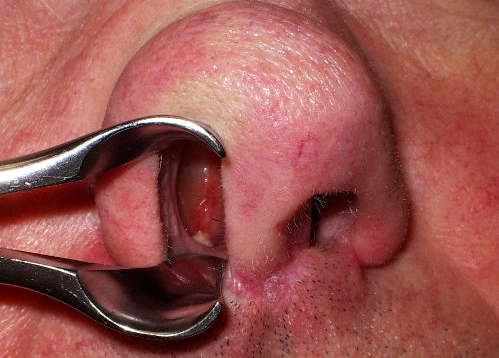Conditions of the Nose and Sinuses
Scroll down for your topic of interest.
Nose and sinus anatomy:
The nose externally consists of skin covering a framework of bone (the nasal bones) and cartilage. The nasal vault consists of a central passage divided into left and right by the septum, and encroached from each side by turbinates. The sinuses are hollow extensions from the nasal vault and consist of left and right frontal, ethmoid, sphenoid, and maxillary sinuses.
Sinus infection
Sinusitis is the term for infection in one or more sinuses.
nasal airflow
While breathing through the mouth is sometimes necessary, such as when exercising, a healthy nose allows adequate airflow through each side such that a person may breathe easily through the nose at rest.
nose shape
Trauma or natural development of a nose with an undesirable shape or size is addressed here.
smell (olfactory) dysfunction
The sense of smell (olfaction) begins from receptors of odorants high in the nose and continues to the brain via the olfactory nerve.
Nose and sinus tumors
Benign or malignant tumors sometimes occur within the nose or sinuses. Depending on symptoms, these may be discovered when the tumor is small (early) or large (late).
nosebleed (epistaxis)
The nose has abundant blood flow and several factors promote nosebleeds, including blood thinners, dry air, a deviated septum, trauma, and high blood pressure.
skin cancers
The nose skin is prominent and prone to unfettered sun exposure, making it a common location for development of skin cancer. The aesthetic and functional significance of the nose with its unique anatomy makes expert management of nasal skin cancer especially important.









